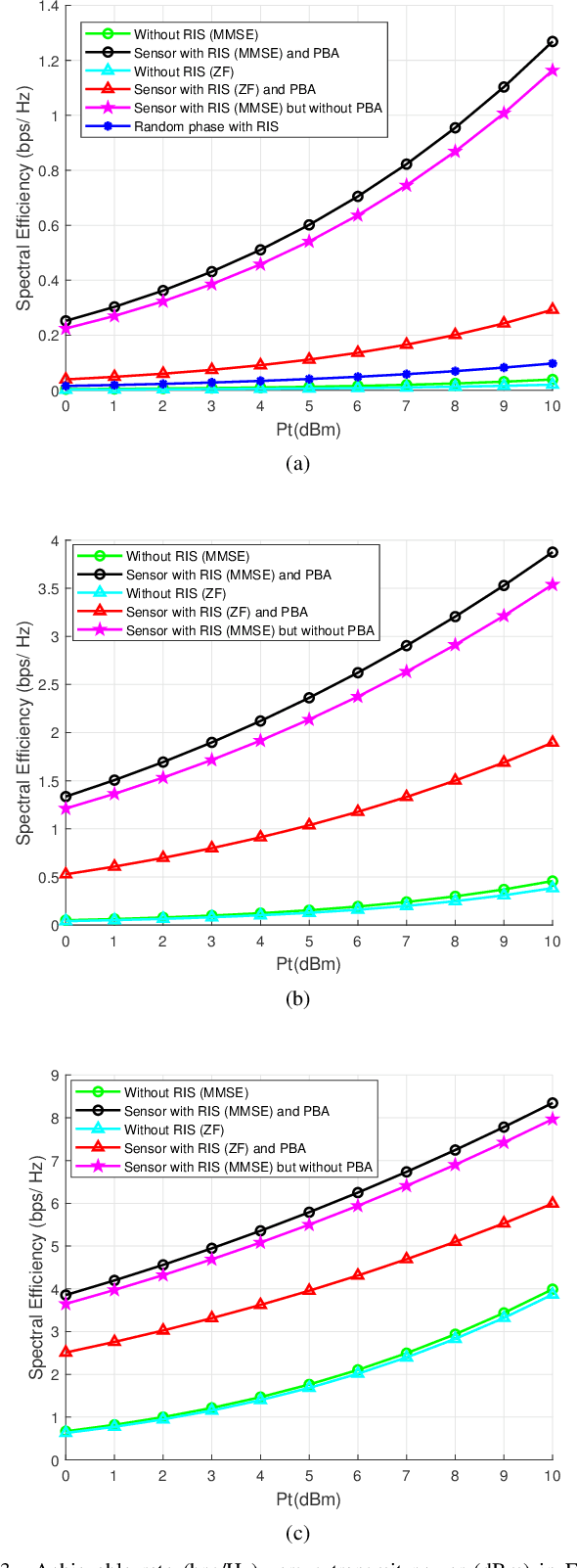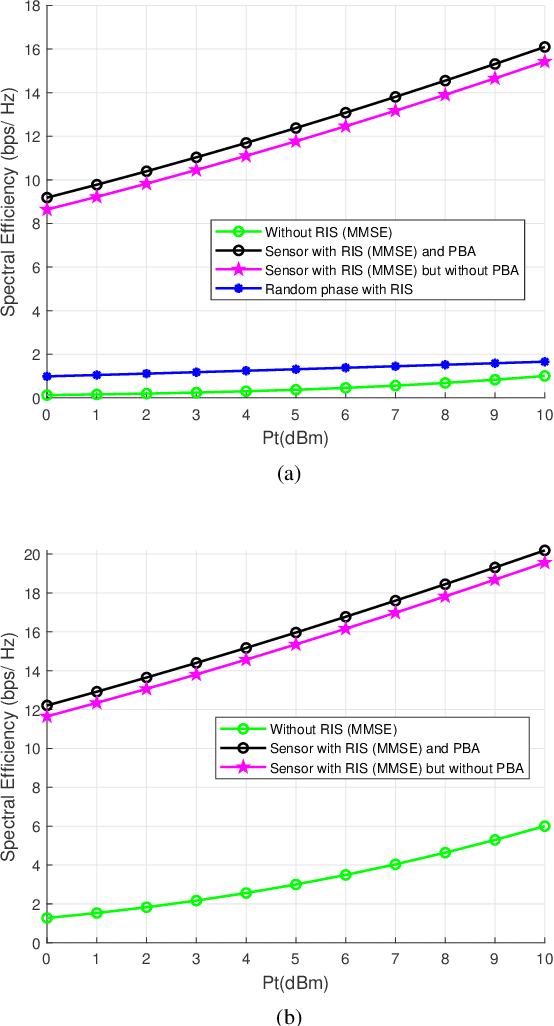Xufang Wang
Quantum Sensing Based Joint 3D Beam Training for UAV-mounted STAR-RIS Aided TeraHertz Multi-user Massive MIMO Systems
Dec 15, 2022Abstract:Terahertz (THz) systems are capable of supporting ultra-high data rates thanks to large bandwidth, and the potential to harness high-gain beamforming to combat high pathloss. In this paper, a novel quantum sensing (Ghost Imaging (GI)) based beam training is proposed for Simultaneously Transmitting and Reflecting Reconfigurable Intelligent Surface (STAR RIS) aided THz multi-user massive MIMO systems. We first conduct GI by surrounding 5G downlink signals to obtain 3D images of the environment including users and obstacles. Based on the information, we calculate the optimal position of the UAV-mounted STAR by the proposed algorithm. Thus the position-based beam training can be performed. To enhance the beam-forming gain, we further combine with channel estimation and propose a semi-passive structure of the STAR and ambiguity elimination scheme for separated channel estimation. Thus the ambiguity in cascaded channel estimation, which may affect optimal passive beamforming, is avoided. The optimal active and passive beamforming are then carried out and data transmission is initiated. The proposed BS sub-array and sub-STAR spatial multiplexing architecture, optimal active and passive beamforming, digital precoding, and optimal position of the UAV- mounted STAR are investigated jointly to maximize the average achievable sum rate of the users. Moreover, the cloud radio access networks (CRAN) structured 5G downlink signal is proposed for GI with enhanced resolution. The simulation results show that the proposed scheme achieves beam training and separated channel estimation efficiently, and increases the spectral efficiency dramatically compared to the case when the STAR operates with random phase.
Hybrid 3D Beamforming Relying on Sensor-Based Training and Channel Estimation for Reconfigurable Intelligent Surface Aided TeraHertz MIMO systems
Feb 04, 2022



Abstract:Terahertz (THz) systems have the benefit of high bandwidth and hence are capable of supporting ultra-high data rates, albeit at the cost of high pathloss. Hence they tend to harness high-gain beamforming. Therefore a novel hybrid 3D beamformer relying on sophisticated sensor-based beam training and channel estimation is proposed for Reconfigurable Intelligent Surface (RIS) aided THz MIMO systems. A so-called array-of-subarray based THz BS architecture is adopted and the corresponding sub-RIS structure is proposed. The BS, RIS and receiver antenna arrays of the users are all uniform planar arrays (UPAs). The Ultra-wideband (UWB) sensors are integrated into the RIS and the user location information obtained by the UWB sensors is exploited for channel estimation and beamforming. Furthermore, the novel concept of a Precise Beamforming Algorithm (PBA) is proposed, which further improves the beam-forming accuracy by circumventing the performance limitations imposed by positioning errors. Moreover, the conditions of maintaining the orthogonality of the RIS-aided THz channel are derived in support of spatial multiplexing. The closed-form expressions of the near-field and far-field path-loss are also derived. Our simulation results show that the proposed scheme accurately estimates the RIS-aided THz channel and the spectral efficiency is much improved, despite its low complexity. This makes our solution eminently suitable for delay-sensitive applications.
 Add to Chrome
Add to Chrome Add to Firefox
Add to Firefox Add to Edge
Add to Edge